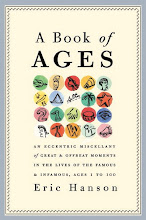
I did this illustration several months ago for the Cornell Law School magazine, art directed by Robin Awes. The topic was the difficult balance between philosophy and pragmatism. It's something encountered in law and politics but also in everyday life, in our work, even something as trivial as drawing pictures. We're always being asked to find a balance between ideal and practical, between good and bad or perfect and less perfect. What happens when the client's idea of perfect is different than our own? I used the monkeywrench to depict the practical and a Greek column to stand in for the philosophical ideal. Notice that the Greek column is a fragment from a ruin. Even the perfect isn't perfect.
When I taught professional practice at the College of Art & Design I had a lecture about another kind of balancing act. I asked my students, who were a couple months from entering the professional world: "What qualities make a successful illustrator?" We compiled two lists, one under the heading GENIUS, the other under RELIABLE. It's the same tension between practical and ideal. Work is a matter of negotiating a balance between the two...with an emphasis on the practical side.


















